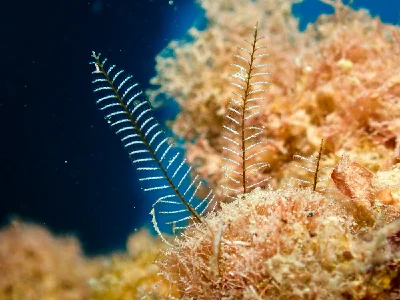Hydrozoa
Hydrozoans, also known as Hydrozoa, are a diverse and fascinating group of small marine animals belonging to the phylum Cnidaria. They are found in oceans all around the world, from shallow coastal waters to the deep sea.
Hydrozoans exhibit a wide range of body forms, from solitary polyps to colonies of interconnected individuals known as zooids. The polyps are typically tubular or vase-shaped and attach themselves to rocks, submerged objects, or other surfaces. They have tentacles surrounding a central mouth, which they use to capture prey such as small planktonic organisms.
One of the defining features of hydrozoans is their unique life cycle, which includes both asexual and sexual reproduction. The asexual phase involves the production of tiny medusae, or jellyfish-like organisms, that are released into the water. These medusae, often transparent and bell-shaped, are capable of swimming and are responsible for the dispersal of the species.
The sexual phase of hydrozoans involves the fusion of specialized reproductive cells from male and female individuals. This produces a fertilized egg, which develops into a planula larva. The planula eventually settles on a suitable substrate, where it transforms into a polyp and begins the cycle again.
Hydrozoans are incredibly diverse, with over 3,000 known species. Some species, such as the Portuguese man o' war (Physalia physalis), are well-known for their colorful and venomous tentacles. Others, like the fire corals (Millepora spp.), form hard calcium carbonate skeletons that resemble coral reefs.
Many hydrozoans are also bioluminescent, meaning they can produce light through chemical reactions within their bodies. This adaptation serves various purposes, such as attracting prey or distracting predators.
While some hydrozoans are considered pests and can cause harm to humans through their stinging cells, many species play important ecological roles. They provide habitat for other organisms, serve as food sources for larger marine animals, and contribute to the overall health and biodiversity of marine ecosystems.
In summary, hydrozoans are a diverse and fascinating group of marine animals. Their varied body forms, unique life cycle, and ecological significance make them a subject of interest for researchers and a captivating sight for underwater explorers.



